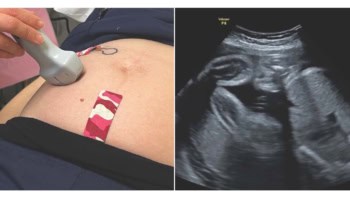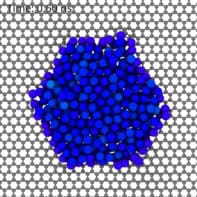
A micron-sized microbial fuel cell that contains multilayer graphene and works using saliva or other waste liquids has been created by researchers in Saudi Arabia and the US. The device, which is capable of producing nearly 1 µW of power, could be used in some bioelectronics applications such as lab-on-a-chip and point-of-care diagnostics. It might even come in handy as an ovulation test and so help in family planning.
Microbial fuel cells are an up-and-coming technology that relies on bacteria to generate electricity from waste. The bacteria in the device break down organic matter and this process releases electrons that can be collected at an anode. The electrons then travel through an external circuit to the cathode to produce electrical current.
Micron-sized microbial fuel cells usually contain two chambers in which the cathode and anode are separated by a semi-permeable membrane. The problem with this set-up is that the cathode chamber needs to be regularly refilled with fresh electron acceptors, such as ferricyanide, which produce higher power densities than more readily available (and much less toxic) electron acceptors such as oxygen (which has only been employed in larger-scale microbial fuel cells until now).
Multilayer graphene anode
A team of researchers led by Muhammad Hussain at the King Abdullah University of Science and Technology (KAUST) together with colleagues at Pennsylvania State University used multilayer graphene foil as the anode and rubber to make the fuel cell. The device also contains an air cathode – which is a first for such a micron-sized cell. More importantly, the researchers have succeeded in doing away with the membrane altogether – something that greatly simplifies the device design and gets rid of the internal resistance associated with this structure, which invariably reduces current output from the fuel cell.
The researchers cut the graphene-anode foil into a 1 × 1 cm square. They then placed a rubber spacer (1 mm thick) with the same dimensions between the cathode and the anode and then cut out a square hole measuring 5 × 5 mm from the centre of the spacer to make it work as the anode chamber. Syringe tips were then inserted into both sides of the rubber so that saliva could be injected into the device. The fact that it is made of rubber also means that the novel cell is flexible and can be attached to a variety of surfaces with ease, explains Hussain. Also, because it has an air cathode, it does not require any laboratory chemicals to function.
Higher current densities
Although mainly made up of water, saliva also contains inorganic and organic compounds, such as glucose, that bacteria can use as fuel. The researchers found that their device produces higher current densities (1190 A/m3) than any such micron-sized microbial cell to date. The graphene anode, for its part, generates 40 times more power than that possible using an ordinary carbon-cloth anode. This improvement comes thanks to graphene’s exceptional electrical conductivity, which allows electrons generated by the bacteria to be transported extremely quickly to the cathode.
Nearly 1 µW of power
“Our study is the first to show that saliva (and most probably other highly concentrated organic fuels) can be used to power bioelectronics devices,” says Hussain. “By producing nearly 1 µW of power, our micron-sized microbial fuel cell is already good enough to run ultralow-power lab-on-a-chip devices – such as an EEG seizure-detection system, to name but one example.”
Another unexpected application is as an ovulation predictor. “It is well known that around five days before ovulation, saliva’s conductivity decreases sharply – most likely because of a peak in oestrogen levels. The new cell could measure this change in conductivity and so identify when a woman is most fertile. The power generated by the device could also perhaps be harnessed to send the data to a smartphone. Such an application could therefore help in better family planning in a non-invasive, easy-to-use way.”
The team is now looking to improve its device so that it produces power in the mW range. One way of doing this might be to make a more efficient air cathode, says Hussain.
The saliva-powered microbial fuel cell is described in NPG Asia Materials.
This article first appeared on nanotechweb.org.



